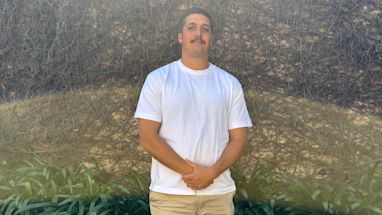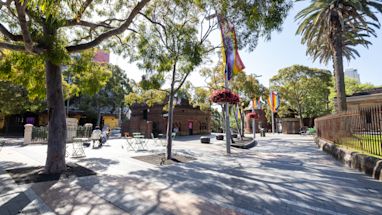
1. Barangaroo
Leader in the local Aboriginal community
Barangaroo, a proud Cameragal woman, refused to bow to the expectations of the white men who landed in her Sydney home in 1788. While her husband, Bennelong, worked with the British to establish relations between the 2 races, Barangaroo took a tougher line. At times she forbade him from joining trips with the white men and wearing clothes when meeting with them.
She’s now honoured with a beautiful headland park in her name, including 6 hectares of public space alongside Sydney Harbour.
Significant site: Barangaroo
Learn more: Dictionary of Sydney

2. Juanita Nielsen
Publisher, activist and urban conservationist
Juanita Nielsen is a figure of mystery, but also hope for many Sydneysiders. The publisher and heiress was a vocal supporter of affordable housing in the city centre. She protested against the sell-off and development of Potts Point and Woolloomooloo through community action groups and her publication NOW. It’s a cause that may have led to her disappearance in 1975.
In 1983, Sydney Council named the community centre at Woolloomooloo after Juanita Nielsen.
Significant site: Juanita Nielsen Community Centre and 202 Victoria Street, Potts Point (Nielsen’s terrace, now state heritage-listed)
Learn more: City of Sydney News

3. Jessie Street
Early feminist, pacifist, human rights activist
Jessie Street believed in equal rights. She fought for equal pay for men and women, the right to vote and perhaps most importantly, recognition for Aboriginal peoples. In 1967, she drafted an amendment to the Australian Constitution which was carried in the referendum of the same year.
Her memory lives on in the Jessie Street Gardens at Circular Quay, a popular spot for city workers to spend their lunch break.
Significant site: Jessie Street Gardens, Loftus Street Circular Quay
Learn more: Australian Dictionary of Biography

4. Hélène Kirsova
Ballet dancer, choreographer, dance teacher
Danish-born prima ballerina, choreographer and Kirsova Ballet School Director Hélène Kirsova came to Australia in 1936. She was touring with Col de Basil’s Monte Carlo Russian Ballet, but stayed on to marry the Danish vice-consul Dr Erik Fisher in 1938.
In the 1940s she devoted her time to improving the lives of children by securing small sites in the congested Sydney suburbs of Erskineville and Glebe for children’s playgrounds. She self-funded them with profits from her Russian ballet school at Circular Quay.
The playgrounds are dedicated to Hélène Kirsova’s memory and are literally named Kirsova 1, Kirsova 2 and Kirsova 3.
Significant site: Kirsova 1 Playground, 67 McDonald Street, Erskineville; Kirsova 2 Playground, 136-140 George Street, Erskineville; Kirsova 3 Playground, Wigram Lane East, Glebe
Learn more: National Library of Australia

5. Lilian Fowler
Australia’s first female mayor, first female politician in NSW
Legend has it that Lilian Fowler decided on a career in politics at a very young age when a Nuisance Inspector confiscated her marbles while she was playing with them on a public footpath.
And what a career it was. She was the first woman alderman in NSW and the first female mayor in Australia. She was also among the first women members of NSW Parliament when she was elected to the seat of Newtown in 1944.
Like Kirsova, Fowler fought for space to create children’s playgrounds and is recognised with a namesake reserve in Newtown.
Significant site: Lilian Fowler Reserve, 27 Angel Street Newtown
Learn more:

6. Anna Maria Bunn (formerly Murray)
Australia’s first female author
Anna Maria Murray was the author of the first novel written and published in Sydney. Titled The Guardian, it was penned in her Pyrmont home in 1838.
Originally published anonymously, the novel combines gothic influences with a comedy of manners and touches on themes including incest and suicide. It received mixed reviews.
2 streets in Pyrmont carry her name: Bunn and Murray streets.
Significant site: Bunn and Murray streets, Pyrmont
Learn more: Dictionary of Sydney
Skirting Sydney
For more stories about Sydney’s pioneering women, check out Skirting Sydney in the Sydney Culture Walks app.
Take a self-guided tour through the city spaces where women from Sydney’s past lived, worked, were educated and entertained.
Published 2 March 2017, updated 11 March 2022


